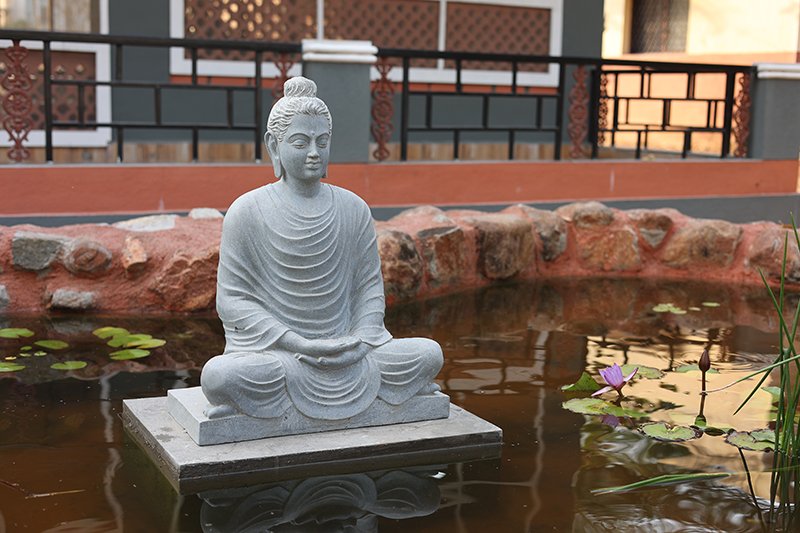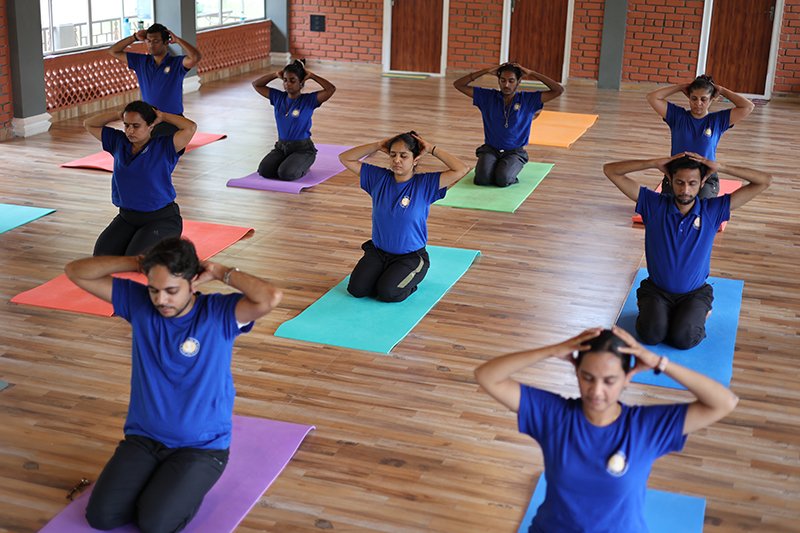Meditation in the modern world
The word ‘meditation’ has gained immense popularity in modern times with many more people and organisations practicing some one or the other form of meditation. Most of us resort to meditation to either calm our mind or deal with unwanted emotions or regain our focus to perform better at life activities.
Meditation according to the English dictionary is loosely translated as contemplating, pondering or thinking about something deeply. When someone says they are meditating, an image of a person sitting crossed legged with closed eyes comes to our minds. However, most of us seldom ask the on what these people meditate upon, and why do some feel the need to meditate in the first place.
Meditation according to Yogic texts
According to sage Patanjali, meditation is a sum total of three phenomena—Dharana, Dhyana and Samadhi. These three form the last three limbs of Ashta-anga (eight limbed) Yoga system. Dharana can be understood as the act of holding one’s attention in the mind on a particular object, thought, mantra, with effort. When this turning inwards and holding one’s attention becomes effortless and an enjoyable experience, this process is then termed as Dhyana. And when Dhyana continues effortlessly for a length of time, a state is reached where the meditator, the object of meditation and the process of meditation all become one. This culmination state is termed as samadhi or a superconscious state of mind where an ordinary human mind gets free from its conditioning and taps into infinite potential.
The common link between the two
If we carefully look at both these definitions, the common thread between both is focus or concentration on a particular idea within oneself. One could adopt any technique to achieve this, but the whole process is undertaken to withdraw the activity of the mind and keep it focused on an idea within.
Dharana and Dhyana
As mentioned earlier, this process of focusing the mind on one particular thought or impulse with effort is Dharana—which is what most of us do when we say we are meditating. When this process becomes effortless and the mind naturally goes to the object of meditation and remains there for a length of time then the Dharana transcends into Dhyana—or deep meditation.
This is where the actual activity of meditation starts taking place.
Most of us struggle at the Dharana stage and upon not receiving any joy or so-called reward out of this activity, prematurely give it up. However, it will be unwise to do so without investigating the cause of the struggle or the reason behind not being able to meditate.
Struggles in meditation
If we observe our daily lives, we go from one activity to another externally and simultaneously multiple thoughts internally. We may be working on a presentation or driving or walking but our mind often dwells either on things that have happened in the past or things we want to do in the future. This incessant thinking becomes a habit and hence the mind wanders when we sit down to meditate.
Rising above the struggle
The first step to moving towards quieting the mind is the realisation that the normal mode of existence and thinking may not work. The next step is to become aware of this endless cycle of thoughts and make a conscious choice to not become involved in this loop.
The simplest technique that is commonly followed everywhere is to focus on one’s breath. Whenever the mind wanders while doing this exercise, one should get back to observing the breath without getting involved in the thoughts that may have crossed the mind.
Other techniques of meditation involve chanting a mantra, visualising a deity, listening to harmonious music, or with open eyes observing a flowing river or the movement of leaves of a tree. All these processes aid in settling down the mind. Sustained effort for some time is necessary for any of these techniques to lead one to an effortless state of being in meditation.
Meditation in daily activities
Painting, gardening, playing a musical instrument or any other activity that brings joy and helps the mind relax are also one form of meditation that we do naturally. Similarly, when we are fully absorbed in an activity like, for instance, writing an article, cooking, solving a mathematics problem or writing a code, we are unconsciously meditating.
By being mindful and conscious, if we could perform most of our daily activities with similar absorption and one pointed attention then when we sit down for meditation, the peace and calm may come naturally.
All Yoga courses at BYVK are centred around this theme of being mindful. We lay great stress on being aware of the breath, body and mind during all activities performed during the class and if possible throughout the day. If this practice is sustained for long then even a simple act of cleaning one’s plate after finishing a meal could become a meditative process.
To sum up, meditation in the formal sense does happen when we sit down with closed eyes, however, the true aim of meditation is to become simple, one-pointed and mindful of all that we do throughout the day. When this kind of harmony is observed daily then meditation also becomes effortless and the mind becomes purified to soar to higher dimensions and possibilities of existence.








